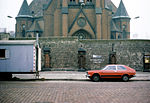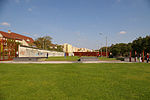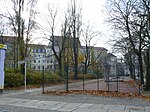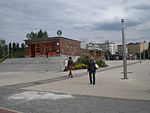St. Sebastian, Berlin
1893 establishmentsBuildings and structures in MitteEurope Roman Catholic church stubsGerman church stubsGothic Revival church buildings in Germany ... and 1 more
Roman Catholic churches in Berlin

St. Sebastian or the Sebastiankirche is a neo-Gothic parish church and state monument on Gartenplatz in Berlin-Gesundbrunnen. It was built between 1890 and 1893 to have capacity for 1000 seats or 3000 standing. It now has a seated capacity of 600 and its parish shares it with the Croatian-speaking community of Berlin.
Excerpt from the Wikipedia article St. Sebastian, Berlin (License: CC BY-SA 3.0, Authors, Images).St. Sebastian, Berlin
Gartenplatz, Berlin Gesundbrunnen
Geographical coordinates (GPS) Address External links Nearby Places Show on map
Geographical coordinates (GPS)
| Latitude | Longitude |
|---|---|
| N 52.5379 ° | E 13.38361 ° |
Address
St. Sebastian
Gartenplatz
13355 Berlin, Gesundbrunnen
Germany
Open on Google Maps









